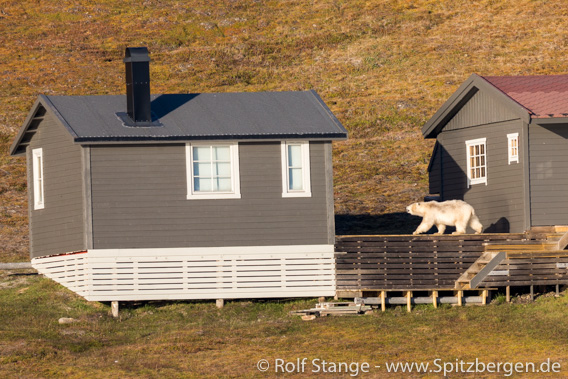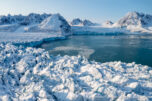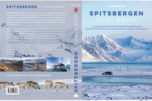-
current
recommendations- Liefdefjord
New page dedicated to one of Spitsbergen's most beautiful fjords. Background information and many photos.
- New Spitsbergen guidebook
The new edition of my Spitsbergen guidebook is out and available now!
- Liefdefjord
New page dedicated to one of Spitsbergen's most beautiful fjords. Background information and many photos.
Page Structure
-
Spitsbergen-News
- Select Month
- May 2025
- April 2025
- March 2025
- February 2025
- January 2025
- December 2024
- November 2024
- October 2024
- September 2024
- August 2024
- July 2024
- June 2024
- May 2024
- April 2024
- March 2024
- February 2024
- January 2024
- December 2023
- November 2023
- October 2023
- September 2023
- August 2023
- July 2023
- June 2023
- May 2023
- April 2023
- March 2023
- February 2023
- January 2023
- December 2022
- November 2022
- October 2022
- September 2022
- August 2022
- July 2022
- June 2022
- May 2022
- April 2022
- March 2022
- February 2022
- January 2022
- December 2021
- November 2021
- October 2021
- September 2021
- August 2021
- July 2021
- June 2021
- May 2021
- April 2021
- March 2021
- February 2021
- January 2021
- December 2020
- November 2020
- October 2020
- September 2020
- August 2020
- July 2020
- June 2020
- May 2020
- April 2020
- March 2020
- February 2020
- January 2020
- December 2019
- November 2019
- October 2019
- September 2019
- August 2019
- July 2019
- June 2019
- May 2019
- April 2019
- March 2019
- February 2019
- January 2019
- December 2018
- November 2018
- October 2018
- September 2018
- August 2018
- July 2018
- June 2018
- May 2018
- April 2018
- March 2018
- February 2018
- January 2018
- December 2017
- November 2017
- October 2017
- September 2017
- August 2017
- July 2017
- June 2017
- May 2017
- April 2017
- March 2017
- February 2017
- January 2017
- December 2016
- November 2016
- October 2016
- September 2016
- August 2016
- July 2016
- June 2016
- May 2016
- April 2016
- March 2016
- February 2016
- January 2016
- December 2015
- November 2015
- October 2015
- September 2015
- August 2015
- July 2015
- June 2015
- May 2015
- April 2015
- March 2015
- February 2015
- January 2015
- December 2014
- November 2014
- October 2014
- September 2014
- August 2014
- July 2014
- June 2014
- May 2014
- April 2014
- March 2014
- February 2014
- January 2014
- December 2013
- November 2013
- October 2013
- September 2013
- August 2013
- July 2013
- June 2013
- May 2013
- April 2013
- March 2013
- February 2013
- January 2013
- December 2012
- November 2012
- October 2012
- September 2012
- August 2012
- July 2012
- June 2012
- May 2012
- April 2012
- March 2012
- February 2012
- January 2012
- December 2011
- November 2011
- October 2011
- September 2011
- August 2011
- May 2011
- April 2011
- March 2011
- February 2011
- January 2011
- December 2010
- November 2010
- September 2010
- August 2010
- July 2010
- June 2010
- May 2010
- April 2010
- March 2010
- February 2010
- November 2009
- October 2009
- August 2009
- July 2009
- June 2009
- May 2009
- April 2009
- March 2009
- February 2009
- January 2009
- December 2008
- November 2008
- October 2008
- August 2008
- July 2008
- June 2008
- May 2008
- April 2008
- March 2008
- February 2008
- April 2000
- Select Month
-
weather information
-
Newsletter

| Guidebook: Spitsbergen-Svalbard |
Home → September, 2019
Monthly Archives: September 2019 − News
Polar bears near Longyearbyen
There have been regular polar bear sightings in Isfjord during the whole summer, both on the north side, from Trygghamna to Ymerbukta and Borebukta, in Billefjord near Pyramiden, but also near Longyearbyen.
This is an ongoing situation: there have been several bear sightings recently not far from Longyearbyen, in Colesdalen, Bjørndalen and Mälardalen. The bear(s) in Colesdalen and Bjørndalen may be one and the same individual, but the one seen in Mälardalen, on the north side of Adventdalen and just a few kilometres away from the settlement and road, is another individual.
On Monday (16 September), a man had to fire a shot from inside a hut at Diabasodden, about 20 kilometres northeast of Longyearbyen, to scare a polar bear away. This worked well and then the Sysselmannen picked the man up by helicopter to avoid further risks.
All this shows that it is very important to take the risk of meeting polar bears very seriously, also in Longyearbyen’s near surroundings.

Polar bear in Hiorthhamn close to Longyearbyen (archive image).
The local newspaper Svalbardposten has a little survey every week and this time they asked what people think about the increasing number of polar bear sightings near Longyearbyen. So far 790 people have given their vote, which is a lot for the Svalbardposten gallup. 500 voted for “we live on Svalbard so we have to adjust”, but no less than 241 chose “it is time to discuss hunting polar bears again”. These surveys are not representative and certainly sometimes the questions and the given answers show an element of humour and satire, something that may also be true for the votes that people give. This may explain at least some of the many votes that ask for discussing polar bear hunting again.
Polar bears were hunted intensely in Svalbard until 1973. The recent increase in numbers is, at least in part, still a recovery from those years when hunting polar bears was an industry.
Double calendar Spitsbergen & Antarctica 2020
The new Spitsbergen calendar 2020 is available now – for the first time, as a “2 in 1” double calendar. We just used the rear sides of the calendar pages that used to be white with older editions. So now we have, additionally to the 12 Spitsbergen images, another 12 stunning images which represent the other cold end of the globe: Antarctica.
Still, we have been able to keep the price stable. And as before, the double calendar “Spitsbergen & Antarctica 2020” is available in two sizes: the larger A3 format features prominently on the wall, while the smaller A5 is … well: smaller.
For further details or ordering, please visit our online shop (click here).
Passenger ship Malmö stuck in ice
Malmö in the ice There are 35 % less ice in the whole Arctic Ocean than usual (a term that will most likely have to be re-defined soon), but in Svalbard, ice conditions are more as they used to be in earlier years. This means that northeastern parts of Nordaustland did not become ice-free at all this summer, and there is drift ice in southern Hinlopen Strait and south of Nordaustland.
The small passenger ship Malmö got stuck in drift ice in southern Hinlopen Strait. The ship is strongly built and can tolerate some ice, but the situation became potentially dangerous when currents moved the ice field towards shallow waters in the area of Rønnbeckøyane, a group of small islands in southern Hinlopen. There were 23 persons on board, including 16 passengers. The Sysselmannen decided to evacuate the passengers by helicoper. The crew could remain on board to take care of the vessel as there was no immediate danger. It is expected that the crew can navigate the ship out of the ice with the shifting tides, something that usually involves openings in the ice. The Norwegian coast guard is in the area to assist as needed.
drift ice in the arctic summer of 2019 – Photo on the subject of Malmö in the ice

News-Listing live generated at 2025/May/04 at 03:23:18 Uhr (GMT+1)
























































